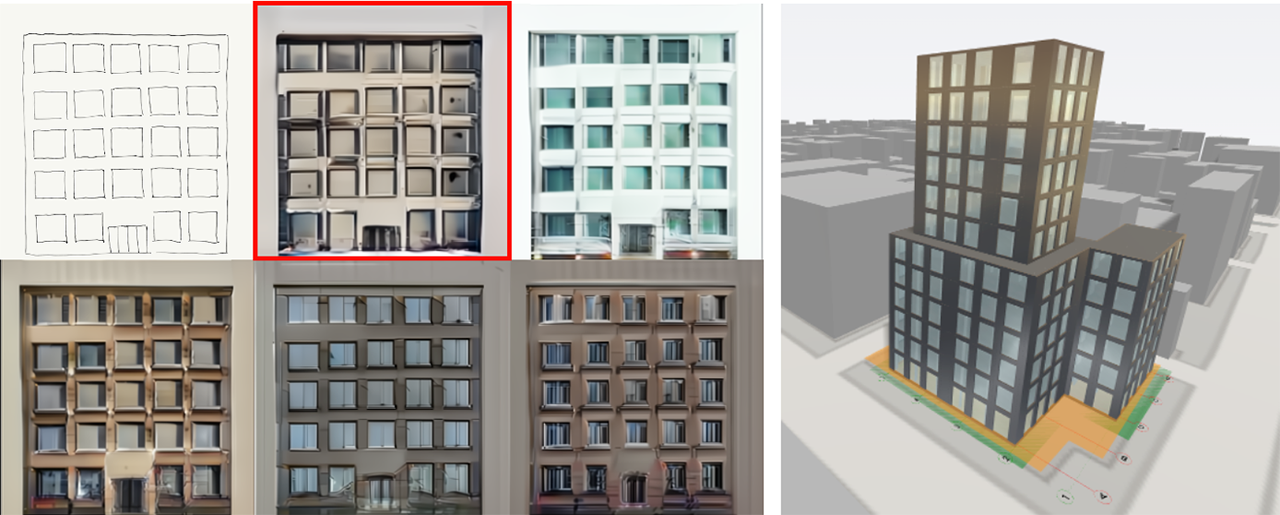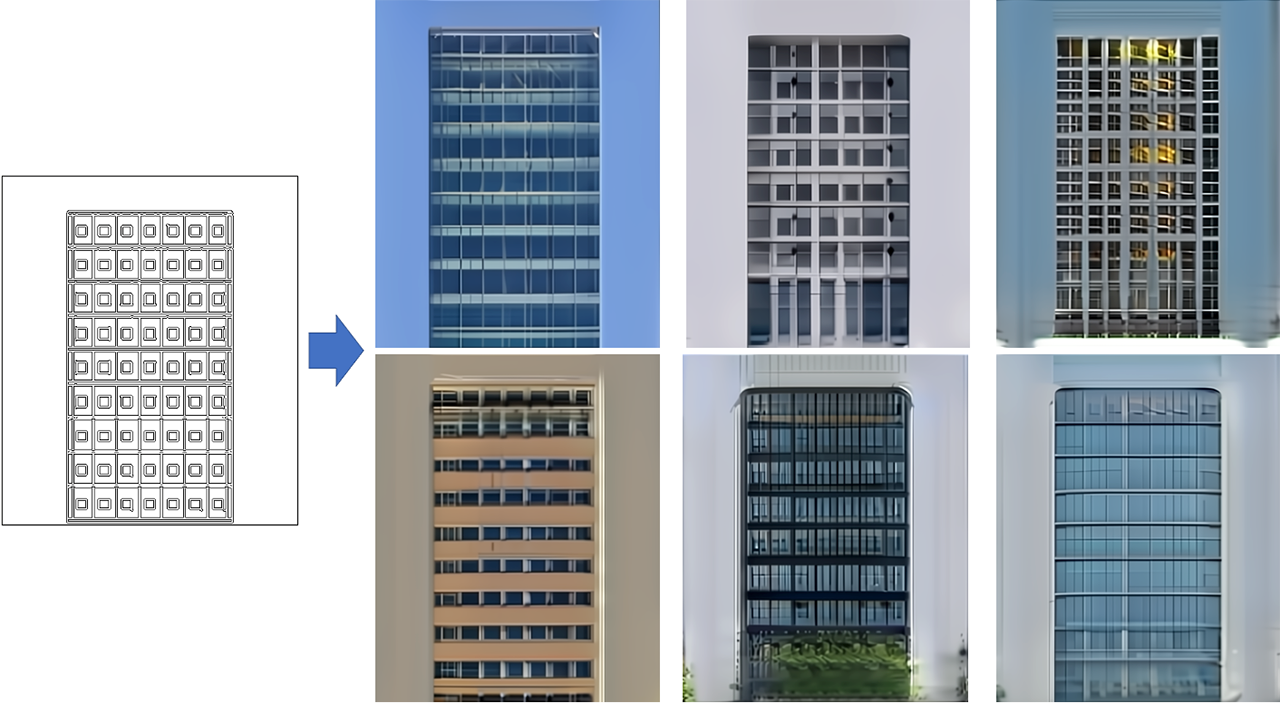Development of AiCorb® to streamline the early stages of architectural design
Realizing rapid design proposals by using AI for façade design study
-
Building Construction
Obayashi Corporation (Head Office: Minato-ku, Tokyo, President: Kenji Hasuwa) in collaboration with SRI International (SRI) (*1), has developed AiCorb, an AI technology that can propose various façade designs from hand-sketched drawing and 3D models. In an additional collaboration with Hypar (*2), the AiCorb design process is now integrated into its process for both schematic volume design and design development of façade design.

In the early stages of an architectural design, architects practice volumetric designs and floor plans of the building based on various criteria: The environmental conditions, the client's requirements in accordance with the Building Standards Act, and the need to make attractive façade design proposals. Architects build a design consensus with the client by presenting proposed designs and adjusting them to fit their feedback. Using current methods, architects have to manually develop concepts and depict them using sketches and CAD for clients, a time-consuming effort. Repeating this process to meet client requirements can become expensive as the number of iterations grows.
Obayashi, in collaboration with SRI, has developed AiCorb, an AI-based technology that automatically generates multiple façade designs from sketches and 3D models of the building. AiCorb is composed of 2 different artificial intelligences (AIs). AI model 1 instantly generates a vast number of façade design proposals based on sketches and outline of 3D models, while AI model 2 converts real façade images and the generated designs to 3D models on the Hypar platform. This new design process links AiCorb and Hypar, integrating these AI technologies into the design process, from volumetric to façade design. It allows architects to rapidly visualize client requests, improving iteration time and making consensus building much more efficient.

The features of the AiCorb are as follows:
Façade design generation from sketches and outline of 3D models
AI model 1 is trained by using various façade designs. After training, architects provide sketches or outline image of 3D models to the AI, which instantly generates any number of different façade designs based off these inputs. This feature drastically reduces the time and effort required to find inspiration and pull out client's actual requests and build consensus in the early stages of architectural design.

2D to 3D conversion of the design generated
AI model 2 is deployed on Hypar, and it estimates the geometry parameters of the input façade image. Using this feature, architects can immediately obtain their ideas as 3D models. Additionally, the input data for the AI is not constrained to real façade images, but can be synthesized images by the other AI. Therefore, architects can instantly present not only façade design but also volumetric design to clients on the spot. It allows architects to discuss on 3-dimentional information and further streamlines consensus building.

In the near future, Obayashi plans to improve and commercialize the proposed AI design process. Addition to it, the process is planned to be released as an publicly available function on Hypar to assist architects for their work.
Obayashi will contribute to improve architecture design work efficiency through the development and proposal of new design process that utilize AI technology. Obayashi will also strive to further improve customer satisfaction by quickly proposing design plans that meet client's requirements.
- *1 SRI International
One of the most innovative nonprofit independent research institutes in the world SRI was established by Stanford University to support local economy development in 1946. It became independent from Stanford University in 1970 and is based in Menlo Park, California. SRI International and Obayashi Corporation currently are engaged in a strategic partnership for the co-development of construction related technology. - *2 Hypar
Hypar was founded in 2018 by Ian Keough, who was involved in the development of Dynamo, a visual programming tool for Revit at Autodesk, and Anthony Hauck, who was also involved in the development of generative design at Autodesk.
Hypar, a platform for architects developed by Hypar, allows users to generate and study three-dimensional designs that take into account the surrounding environment of the proposed construction site by simply defining some important variables such as building height and floor height, in addition to basic information such as address and plan outline. Users can develop and share their own functions, and the system features easier and faster design studies than using conventional tools. With the aim of introducing Hypar to the Japanese market, Obayashi has verified the functionality of Hypar on Tokyo mid-rise project, and confirmed the practicality of their platform by implementing additional necessary functions such as a function to visualize height regulations in Tokyo.

